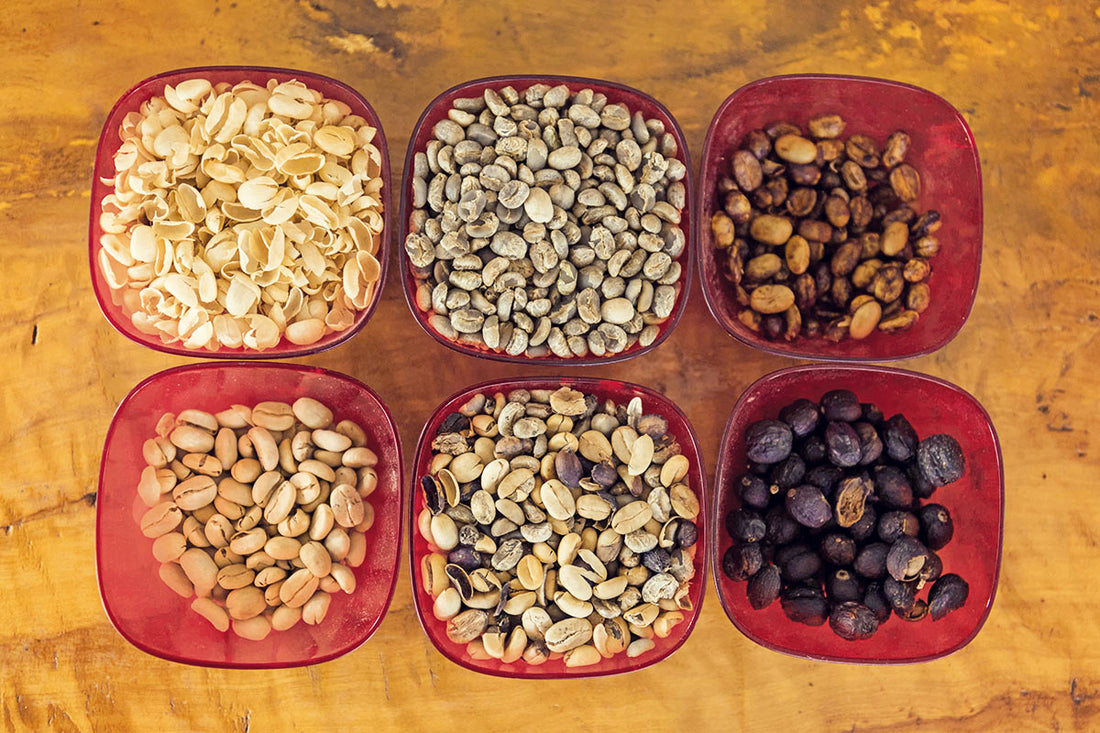
Coffee Processing Methods: A Journey Between Tradition and Innovation
Every cup of coffee is much more than a simple drink: it is a story of distant lands, of expert hands that select the ripest fruits, of patient processes that transform cherries into fragrant beans. It is a journey that begins in the plantations, where each bean grows nourished by the sun, the rain and the care of the farmers, and then embarks on a complex and fascinating journey through the processing methods.
These methods are not simple technical steps, but real art forms that shape the soul of coffee, defining its aromas, body and flavors. Each bean is like a blank canvas and the processing is the brush that paints unique shades, making each cup an unrepeatable experience.
Natural Method:
The natural method, one of the oldest and most poetic, entrusts the sun and time with the task of transforming the fruit into a bean. After harvesting, the ripe cherries are placed whole on raised beds or patios and left to dry for weeks. During this process, the sweet pulp envelops the bean, transferring sugars and complex aromas.
This process creates coffees with intense and full-bodied aromatic profiles, with notes of red fruits, dark chocolate and raisins. It is like tasting the warmth of the sun and the sweetness of the land from which it comes. However, the natural method requires attention and patience: irregular drying can compromise quality, giving rise to unwanted flavors. 
Washed Method:
The washed method is synonymous with clarity and cleanliness. Here, the coffee is gently stripped of its skin and pulp, leaving the bean immersed in tanks of water for controlled fermentation. The microorganisms present in the water work the mucilage that surrounds the bean, slowly eliminating it and revealing the pure heart of the coffee.
This technique gives the cup a unique brilliance: lively acidity reminiscent of citrus, elegant floral notes and a clean taste that enhances every nuance of the bean. Washed coffee is like a spring of fresh water that flows clear, revealing the true essence of the fruit. 
Honey Method:
The honey method is a perfect balance between natural and washed. After pulping, a part of the sweet mucilage remains on the bean, creating a layer that caramelizes during drying, giving the coffee sweetness and body.
Depending on the amount of mucilage left, different variations are created: from yellow honey, more delicate and light, to black honey, intense and dark, almost vinous. In the cup, these coffees tell stories of honey, caramel, ripe fruit and a gentle acidity that dances on the palate. 
Experimental Methods:
The art of coffee processing does not stop at traditional methods. In recent years, the most daring producers have experimented with new techniques, exploring the boundaries of what is possible and creating new aromatic profiles.
Anaerobic Fermentation
In this technique, cherries are placed in sealed containers, free of oxygen, for a slow and controlled fermentation. The result is a coffee with complex aromas, with notes of fermented fruit, sweet spices and a deep sweetness that envelops the palate.
Carbonic Maceration
Inspired by the world of wine, this method immerses whole cherries in environments saturated with carbon dioxide. Fermentation occurs from the inside out, creating explosive coffees, with aromas of red fruits, ripe strawberries and a lively acidity.
Fermentation with Selected Yeasts
This is where science meets art. Selected yeast strains are added during fermentation to guide aromatic development. The result is a clean, precise coffee with floral, tropical or spicy notes, depending on the yeast used.
A Journey to Savour to the Fullest
Each processing method is a stage of a fascinating journey that transforms a simple fruit into a unique sensory experience. Coffee is never just coffee. It is the sun that warmed the plant, the hands that picked the cherries, the time that patiently waited for drying and the art of those who knew how to enhance each phase of the process.
The next time you sip a cup of coffee, stop for a moment. Savor each sip as if it were the page of a story, let yourself be carried away by the sweet, acidic or full-bodied notes and imagine the long journey that bean has made to reach you. Because every coffee is a story. And every story deserves to be heard.
